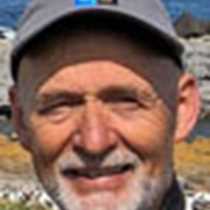Edgeøya & Storfjorden, Svalbard
A gentle wake-up call reached our ears as MS National Geographic Explorer was heading southwards along the west coast of Edgeøya. This island comprises the southern part of Søraust-Svalbard Nature Reserve. During the history of trapping in Svalbard, Edgeøya was valued to be one of the most attractive areas for polar bears, Arctic foxes and Svalbard reindeer. As we set foot in Habenichtbukta – a sheltered bay on the southwestern part of the island - we found ourselves amongst remains of old trappers’ cabins, foundations for tents and graves. The first overwintering in this area probably were Pomors coming from Russia in the late seventeen hundreds.
Many guests went hiking ashore. We found several items showing evidence of varied hunting and trapping activities. Skeletal parts of whales, walruses, polar bears, reindeer and foxes were all proof of the wildlife of southern Edgeøya in the old days. Thanks to a well settled system of hunting and trapping territories in Svalbard, the hunting was sustainable for a long time for most of the species that were hunted.
Svalbard was divided into 45 hunting territories. During the 19th and 20th century, however, species like polar bears, walrus and reindeer were overharvested, and the population declined. By the time Norway was granted full sovereignty of Svalbard through the Svalbard Treaty, the Svalbard reindeer was about to become extinct. Thanks to the Norwegian government’s introduction of a total ban on reindeer hunting in 1925, the reindeer population in Svalbard has since recovered. Today there is an estimated population of approximately 10,000 reindeer. The hunting of walrus was banned in 1952, and a ban of polar bear hunting was introduced in 1973. These measures have proved successful. Species like the Arctic fox, the Svalbard ptarmigan and Arctic geese never seemed to be severely threatened, and the populations of these species seem to be in good shape today.
As the morning hikers crossed the tundra numerous birds were encountered: snow buntings, a pair of red-throated loons, two pairs of long-tailed ducks, plus a large flock of pink-footed geese. We also found a number of Arctic flowers, particularly in places where the plants could find nourishment and shelter against the wind. Those who had chosen a Zodiac cruise came close to a couple of walruses.
During the afternoon Karen Copeland gave a presentation about glaciers and ice. Shortly after, three adult polar bears were spotted, and the front deck suddenly was filled with guests with an arsenal of long lenses. The encounter took place in dense drift ice in the southern part of the Storfjord. All the bears seemed to be in very good condition.
After dinner, just as our video chronicler Jim Napoli had shown parts of the voyage video, another bear sighting was announced. In the warm light from the evening sun a female bear with a cub of the year could be observed on a big ice floe just a hundred yards from the bow of the ship. As the cub paid tribute with elegant acrobatics on the floe, rapid clicking from the many cameras on deck confirmed that an extraordinary show was going on just in front of us.
This evening was this trip’s final farewell to drift ice. As the photo catch of the day appeared on the laptops, many smiles and oh’s confirmed that another great day of exploring lay behind us.



